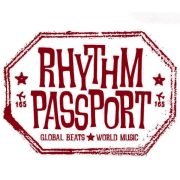Afro-Haitian Experimental Orchestra self titled debut is an album of Haitian songs, some Vodou culture songs, in a way which fans of Haitian music are accustomed to. Instead it has mixed Haitian rhythms with afrobeat to produce something new. An album that covers all of Haiti’s cultural roots that are not only African but also European and Native American, but also brings us new grooves, the best way to think about it is as the title says: experimental music.
Most Haitians would associate this album with rasin music: Vodou culture songs mixed with pop and rock sounds or played as they are heard if in a Vodou temple. It was very popular in the 90’s. “Yanvalou” a gorgeous song, might be this album’s song most true to Vodou culture though “Bade Zile”, a song with incredible drum playing, is also very true to Vodou culture’s aim to possess a listener with rhythm.
“Wongolo” is this album’s standout song because of its well-nuanced instrumentation which thrills. The song itself is a Vodou culture song such to Bazou Mennen, a loa (vodou spirit) that is the spirit of an old king of n’gola or Angola. This King is celebrated in Haitian Vodou for his fighting prowess. However, the song could have featured better singing, and the same can be said for many other songs on this album.
This album plays with the entirety of Haiti’s cultural roots: Vodou, kreyol language, Native American culture, European (Western) culture, and African culture. The songs are sung in kreyol. The instruments are a mix of Western and African culture instruments turned Haitian after years of settlement by the sons and daughters of the slaves who came to Haiti aboard slave ships. The song “Yanvalou” shares its name with a Vodou rhythm that comes from Benin and its surely because the rhythm has been integrated into the song, though not in a way that is familiar to most Haitians. The song “Mon Ami Tezin”, sung by the phenomenal singer Erol Josue, is the name of a Native American (either Taino or Arawak) folktale that Haitians have preserved. The list goes on.
There’s been a long history of orchestra music in Haiti. Whether it be Occyde Jeanty’s state run orchestra in the late 19th century, Super Jazz des Jeunes fronted by Lumane Casimir in the 20th, or Issa El Saieh’s path charting orchestra in the 20th, the art of playing a composition as a collective of minds and instruments has meant much to Haitians and continues to. The tradition goes back to the Haitian revolution when Jean Jacques Dessalines had orchestras at their disposal. Today, Tropicana, Orchestre Septentrional, and many smaller orchestras whose ensembles go by the popular moniker ‘djaz’ continue the long tradition.
Orchestras are very expensive to run: it’s much easier to make a living as part of a small band than as part of a big band. To maintain an Orchestra in Haiti one must fill up which ever venue you are playing every single time and to do so Orchestras play songs that Haitians will not want to miss, some 50 or so years old. This sort of music would probably not survive past one album on Haitian terrain. A Rasin Orchestra has never existed in Haiti and the largest that a Rasin group has ever been is Rasin Mapou, a much smaller group than most Haitian Orchestras. Rasin music’s audience would not allow musicians to make a living from playing as a full Orchestra.


